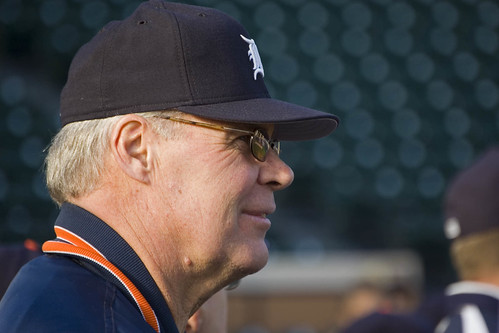Casey Deal Reminiscent Of '87 Madlock Trade
The veteran hitter was scuffling along, playing in anonymity for a National League team, several years past thirty in age, his best years behind him, most likely. He had been a batting champion, though, and a strong MVP candidate in years past. He went to some All-Star games.
Then the Tigers came calling, and there was a rebirth. He wasn't a one-man band, but he contributed greatly to the team's divisional title.
The Tigers might have won the 1987 AL East without Bill Madlock, but it's doubtful any of them would have liked to try.
The Tigers rescued Madlock from himself when they acquired him in early June, 1987, from the Los Angeles Dodgers. He was a career .300 hitter who was struggling to keep his head above .200. The Tigers traded a minor leaguer -- nobody of note -- to get Madlock, and almost instantly the acquisition paid off.
The 36 year-old Madlock's numbers weren't terribly gaudy as a Tiger: .279 BA, 14 HR, 50 RBI in 326 AB. But he gave manager Sparky Anderson a much-needed right-handed bat, and a guy who knew how to hit. In fact, Madlock collected his 2,000th career hit as a Tiger.
Sean Casey might be the lefthanded version of Madlock. Casey, too, is not being asked to carry the team. His presence is to be that of a reliable, .300 hitter who can fit in nicely with an already formidable lineup. Casey's a former All-Star, too. He, also, was a career National Leaguer before the Tigers nabbed him. (Madlock broke in with the Rangers, but only had 77 American League AB and about 6,500 NL ones).
The Tigers of 1987 were put together by Bill Lajoie, one of the best sports executives to ever work in Detroit. Later in '87, Lajoie would author the famous/infamous John Smoltz-for-Doyle Alexander deal. That one also worked out well in '87, if you recall.
Madlock later served as the Tigers hitting coach.
First things first: let's get Sean Casey into the playoffs, then we can worry about whether he'll one day be the team's hitting coach.
Then the Tigers came calling, and there was a rebirth. He wasn't a one-man band, but he contributed greatly to the team's divisional title.
The Tigers might have won the 1987 AL East without Bill Madlock, but it's doubtful any of them would have liked to try.
The Tigers rescued Madlock from himself when they acquired him in early June, 1987, from the Los Angeles Dodgers. He was a career .300 hitter who was struggling to keep his head above .200. The Tigers traded a minor leaguer -- nobody of note -- to get Madlock, and almost instantly the acquisition paid off.
The 36 year-old Madlock's numbers weren't terribly gaudy as a Tiger: .279 BA, 14 HR, 50 RBI in 326 AB. But he gave manager Sparky Anderson a much-needed right-handed bat, and a guy who knew how to hit. In fact, Madlock collected his 2,000th career hit as a Tiger.
Sean Casey might be the lefthanded version of Madlock. Casey, too, is not being asked to carry the team. His presence is to be that of a reliable, .300 hitter who can fit in nicely with an already formidable lineup. Casey's a former All-Star, too. He, also, was a career National Leaguer before the Tigers nabbed him. (Madlock broke in with the Rangers, but only had 77 American League AB and about 6,500 NL ones).
The Tigers of 1987 were put together by Bill Lajoie, one of the best sports executives to ever work in Detroit. Later in '87, Lajoie would author the famous/infamous John Smoltz-for-Doyle Alexander deal. That one also worked out well in '87, if you recall.
Madlock later served as the Tigers hitting coach.
First things first: let's get Sean Casey into the playoffs, then we can worry about whether he'll one day be the team's hitting coach.










 Proud Member of DIBS
Proud Member of DIBS

1 Comments:
Bill Madlock was also the first player I thought of when I heard about the Casey trade.
Post a Comment
<< Home